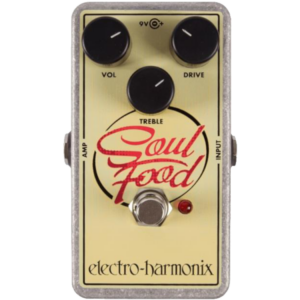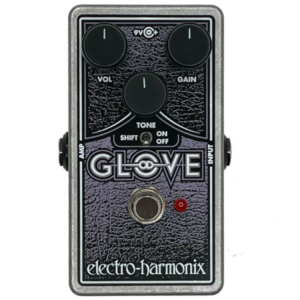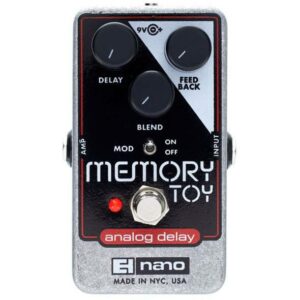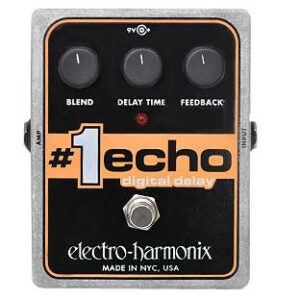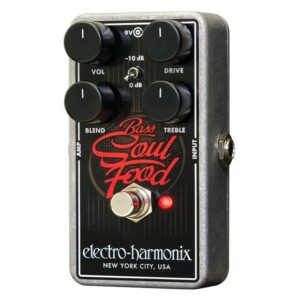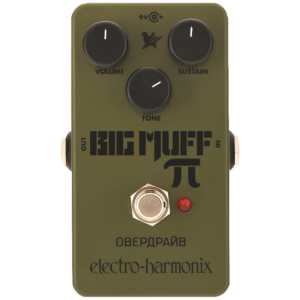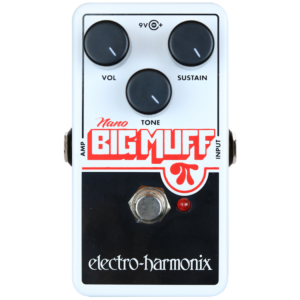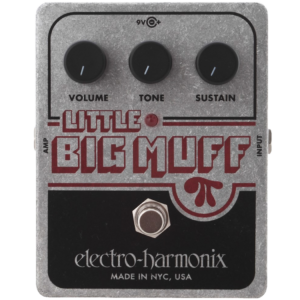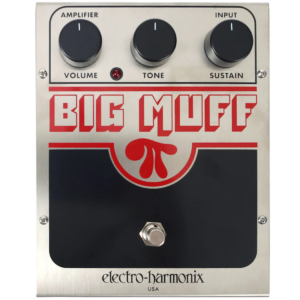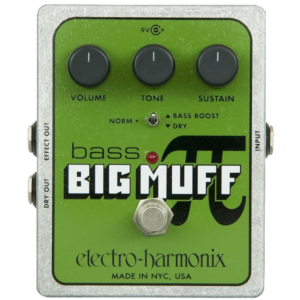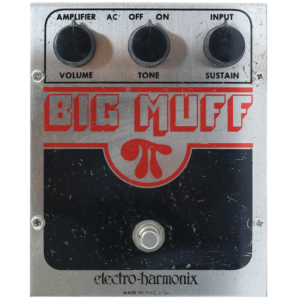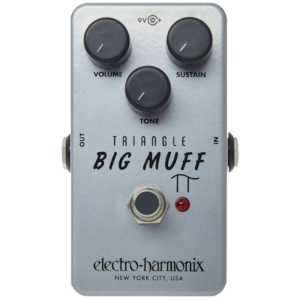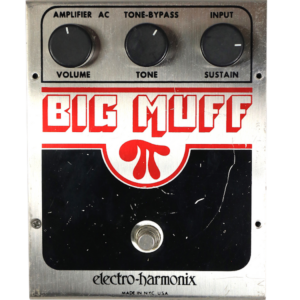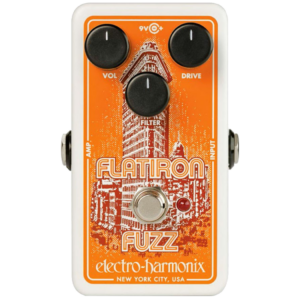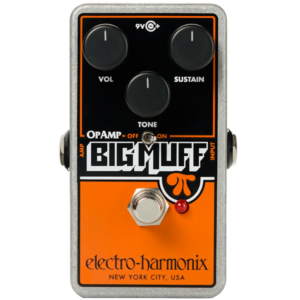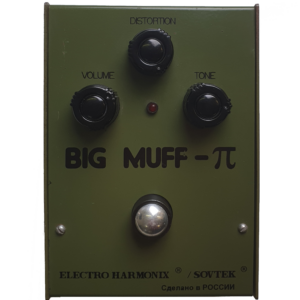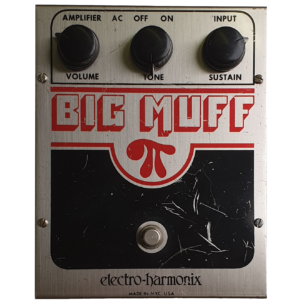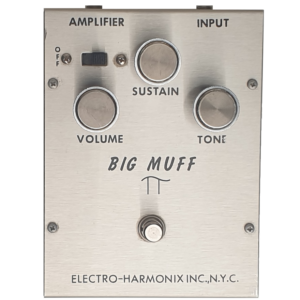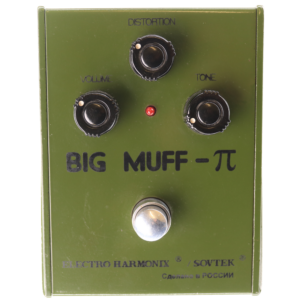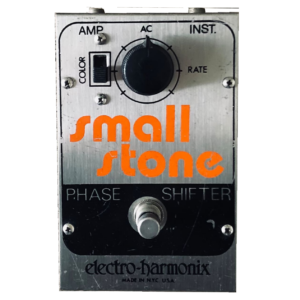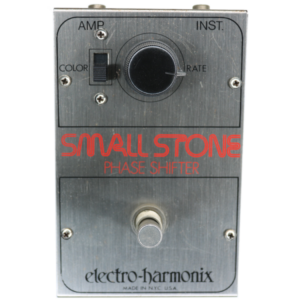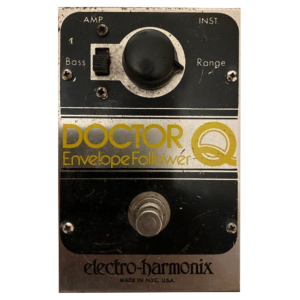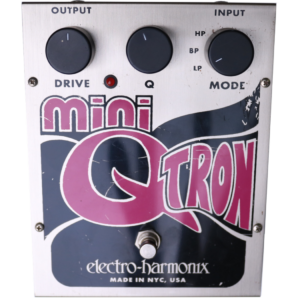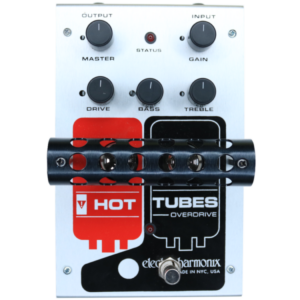Few can deny the effect pedals such as the Big Muff fuzzbox have had on the sound of the guitar from its initial design in 1969 to this day. Its bass-heavy sustain, designed to mimic the fuzz tones of Jimi Hendrix would revolutionize fuzz in the sounds of many legendary players in the course of its life. Carlos Santana, David Gilmour, Metallica, KoRn, Jack White, The Edge, Billy Corgan would join the list of names whose sound the pedal became fus(zz)ed with. The band Mudhoney even titled their debut EP “Superfuzz Bigmuff”.
Founded in 1968, Electro-Harmonix was the brainchild of partners Mike Matthews (rnb keyboard player) and Robert Myer (electronic engineer) who set out to design a circuit which would create a distortion-free sustain ‘fuzz’, that was so popular at the time. The Axis fuzz pedal, sold under the name ‘Foxey Lady’ as a reference to Jimi Hendrix’s sound on the famous track and the Linear Power Booster (LPB-1), a simple line booster used by Matthews in testing to pre-amplify the guitar’s signal were the first pedals to go on the market. The LPB-1 massively boosted guitar signal to provide gain by clipping the signal, resulting in a raw, distorted sound, full of sustain and harmonics.
After a brief pause between the mid-80s and early 1990’s to develop re-branded vacuum tubes, Electro-Harmonix set to work with re-issues of their most popular models. It wasn’t till 2002 that their ever-expanding range of new models and pedal-combos began to emerge and further shape the sound of many of the industry’s most venerated musician’s sounds and processes. The Small Stone phase shifter would shape the sound of Jean-Michel Jarre, The Electric Mistress analog flanger; integral to guitar legend John Frusciante’s timbre. The Memory Man delay pedal was used by The Edge in “Sunday Bloody Sunday”. Electro-Harmonix pedals can be found everywhere in your favourite records and offer a wealth of creative possibility in crafting a unique sound.

